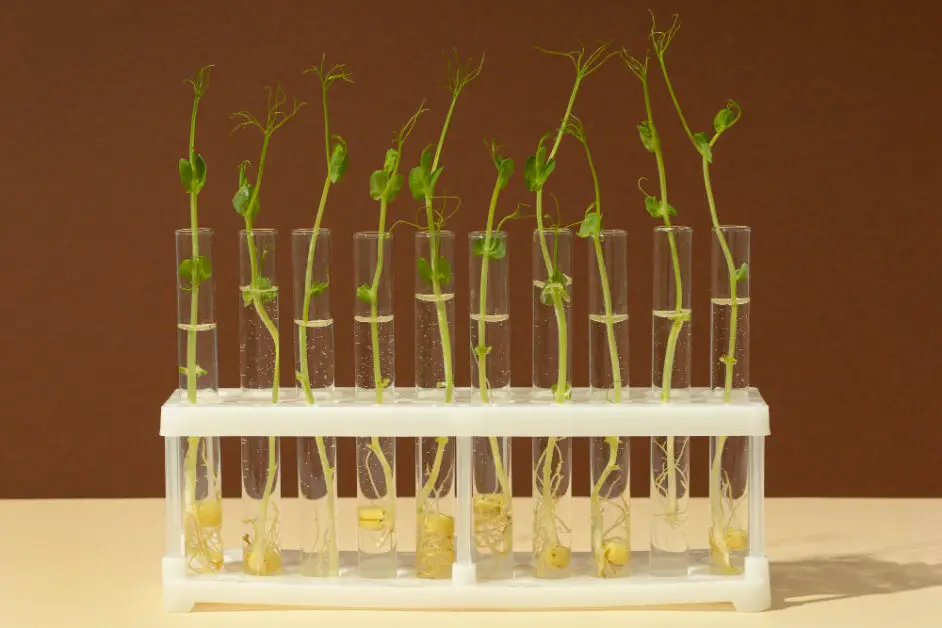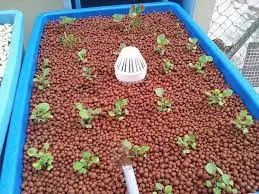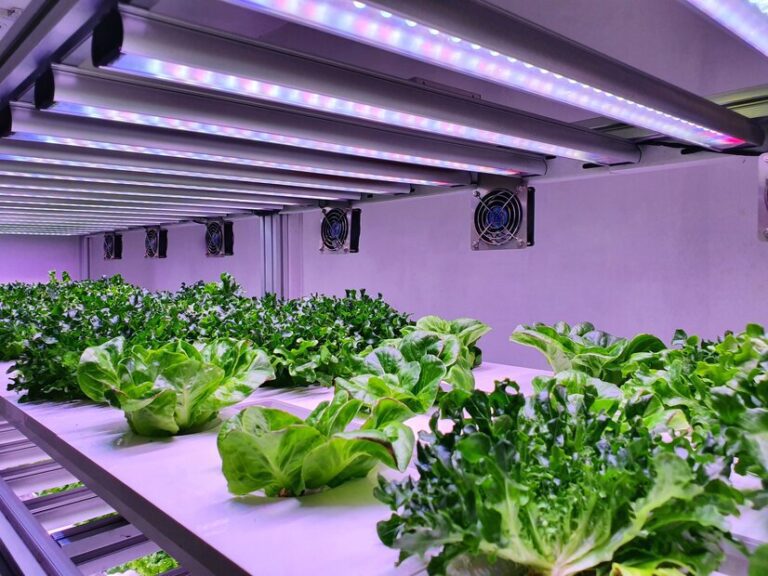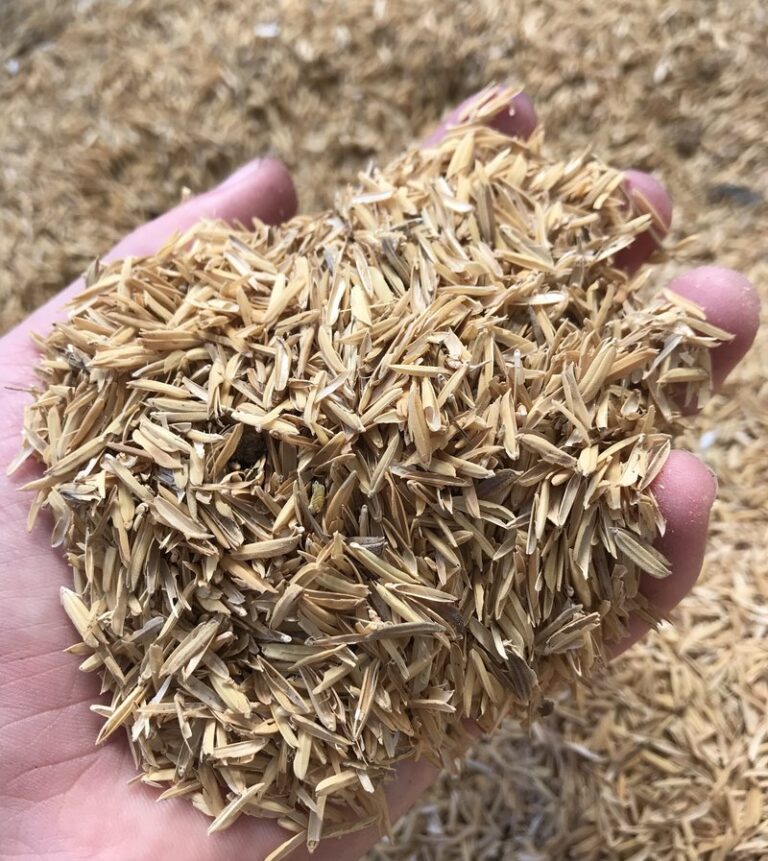How to Ensure Water Quality in Your Hydroponic Systems: A Guide to Testing and Treatment
1. Understanding the Importance of Water Quality in Hydroponics
Water quality is a critical factor in ensuring the success of hydroponic systems. As a gardener, it is crucial to understand the importance of maintaining optimal water conditions for the health and growth of your plants. In hydroponics, plants receive their nutrients directly from the water, making it essential to have a clean and balanced water supply.
Poor water quality can have detrimental effects on plants, leading to stunted growth, nutrient deficiencies, and even plant death. Contaminants such as excessive minerals, chemicals, pathogens, and organic matter can impact the overall performance of your hydroponic system. Additionally, imbalances in pH levels and electrical conductivity (EC) can affect nutrient uptake and plant metabolism.
To achieve optimal water quality, regular testing and monitoring are necessary. This helps identify any issues early on and allows for appropriate corrective measures to be taken. By maintaining a clean and balanced water supply, you can provide your plants with the best possible growing environment, leading to healthy and thriving crops.
• Regular testing and monitoring of water quality is crucial in hydroponics.
• Poor water quality can lead to stunted growth, nutrient deficiencies, and plant death.
• Contaminants such as excessive minerals, chemicals, pathogens, and organic matter can impact the performance of a hydroponic system.
• Imbalances in pH levels and electrical conductivity (EC) can affect nutrient uptake and plant metabolism.
• Maintaining a clean and balanced water supply is essential for providing plants with an optimal growing environment.
2. Common Water Quality Issues in Hydroponic Systems
Common Water Quality Issues in Hydroponic Systems
Maintaining optimal water quality is crucial for the success of any hydroponic system. However, there are some common water quality issues that can arise and affect plant growth and overall system health.
One such issue is pH imbalance. pH measures the acidity or alkalinity of the water, and an imbalance can significantly impact nutrient availability to the plants. If the pH becomes too high or too low, certain nutrients may become unavailable to the plants, leading to deficiencies or toxicities. Monitoring and adjusting the pH regularly is essential to ensure a stable growing environment for the plants.
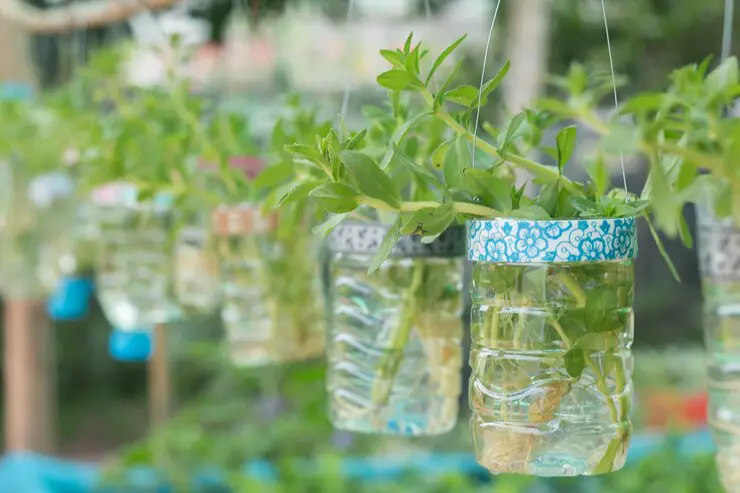
Another common issue is elevated EC levels, also known as electrical conductivity. EC measures the concentration of dissolved salts in the water, which directly affects nutrient uptake by the plants. High EC levels can lead to nutrient imbalances and hinder plant growth. Regular monitoring and adjusting of the EC levels through the use of nutrient solutions and water filtration systems are necessary to maintain the ideal nutrient balance for the plants.
By addressing these common water quality issues in hydroponic systems, growers can create a more favorable environment for their plants to thrive.
• pH imbalance is a common water quality issue in hydroponic systems
• Imbalanced pH levels can affect nutrient availability to plants
• Regular monitoring and adjustment of pH is necessary for a stable growing environment
• Elevated EC levels (electrical conductivity) can also be an issue in hydroponic systems
• High EC levels can lead to nutrient imbalances and hinder plant growth
• Regular monitoring and adjusting of EC levels through the use of nutrient solutions and filtration systems is important
By addressing these common water quality issues, growers can ensure optimal conditions for their hydroponic plants.
3. Assessing Water Quality: The Basics of Testing
Water quality is a critical factor in the success of hydroponic systems. Assessing the quality of water used in these systems is essential to ensure optimal plant growth and productivity. The basics of testing water quality involve evaluating various parameters such as pH, electrical conductivity (EC), dissolved oxygen levels, nutrient concentrations, and the presence of contaminants or pathogens.
pH is one of the most important parameters to monitor in hydroponics. It refers to the acidity or alkalinity of the water and plays a significant role in nutrient availability and absorption by plants. Most hydroponic crops thrive in a slightly acidic to neutral pH range, typically between 5.8 and 6.5. Testing the pH levels of your water source and adjusting it accordingly will help maintain a favorable environment for plant growth. Furthermore, electrical conductivity (EC) measurement helps determine the concentration of dissolved salts in the water, which directly affects nutrient availability and uptake by plants. Regular testing and monitoring of these parameters are crucial for optimizing plant health and preventing potential imbalances or deficiencies.
• pH is a critical parameter to monitor in hydroponics
• pH refers to the acidity or alkalinity of water
• Most hydroponic crops thrive in a slightly acidic to neutral pH range (5.8-6.5)
• Testing and adjusting the pH levels of water source is important for plant growth
• Electrical conductivity (EC) measurement determines dissolved salt concentration in water
• EC affects nutrient availability and uptake by plants
• Regular testing and monitoring of pH and EC are crucial for optimizing plant health
4. Essential Water Parameters to Monitor in Hydroponics
Essential water parameters play a crucial role in maintaining optimal growth conditions for plants in hydroponic systems. Monitoring these parameters regularly ensures that the plants receive the right balance of nutrients and a suitable environment for their development. Let’s take a closer look at some of the key water parameters that hydroponic growers should monitor.
pH level: The pH level of the water directly affects nutrient availability to plants. Most hydroponic crops thrive in a slightly acidic to neutral pH range of 5.5 to 6.5. Deviations from this range can lead to nutrient deficiencies or toxicities, hindering plant growth and productivity.
Electrical conductivity (EC): EC measurement assesses the concentration of dissolved salts or nutrients in the water. It provides valuable insights into the overall nutrient strength of the solution. Different plant species have varying nutrient requirements, and maintaining an appropriate EC level is vital to avoid nutrient imbalances and their associated negative impacts on plant health.
Oxygen levels: Adequate oxygen levels in the hydroponic system are crucial for healthy root development. Insufficient oxygen can lead to root rot and other oxygen-related problems. Monitoring oxygen levels ensures that plants have access to the necessary oxygen supply for proper nutrient uptake and overall growth.
Temperature: Maintaining an optimal water temperature is essential for the overall health and growth of plants. Different plant species have different temperature preferences, but generally, maintaining water temperatures between 18°C to 22°C (65°F to 72°F) promotes optimal growth and minimizes the risk of pathogen proliferation.
By monitoring and adjusting these essential water parameters, hydroponic growers can create a stable and favorable environment for their plants, ultimately maximizing productivity and ensuring healthy crop yields.
• pH level: The pH level of the water directly affects nutrient availability to plants.
• Electrical conductivity (EC): EC measurement assesses the concentration of dissolved salts or nutrients in the water.
• Oxygen levels: Adequate oxygen levels in the hydroponic system are crucial for healthy root development.
• Temperature: Maintaining an optimal water temperature is essential for the overall health and growth of plants.
Monitoring and adjusting these essential water parameters can help create a stable and favorable environment for hydroponic plants, maximizing productivity and ensuring healthy crop yields.
Here is a table that shows how different parameters affect the hydroponics
Here is a table summarizing some of the essential water parameters to monitor in hydroponics:
| Parameter | Description |
|---|---|
| pH | In hydroponic systems, the ideal pH range is between 5.5 and 6.5. If the pH is too high or too low, it can affect nutrient availability and uptake, leading to plant stress and nutrient deficiencies |
| Electrical conductivity | The ideal EC range for hydroponic systems is between 1.2 and 2.0 mS/cm. If the EC is too high or too low, it can affect plant growth and development |
| Temperature | The ideal water temperature for hydroponic systems is between 65-75°F (18-24°C). High water temperatures reduce dissolved oxygen levels, leading to root damage and nutrient deficiencies |
| Oxygen | When oxygen levels are too low, plant roots may become deprived of oxygen and eventually die off due to a lack of nutrient intake |
5. Choosing the Right Water Testing Equipment for Your Hydroponic System
When it comes to choosing the right water testing equipment for your hydroponic system, there are several factors to consider. First and foremost, you need to assess the specific parameters that you want to test for. pH, electrical conductivity (EC), dissolved oxygen (DO), and nutrient levels are some of the key parameters to monitor in hydroponics.
For pH testing, a digital pH meter is a commonly used tool. It provides accurate and precise readings, allowing you to maintain the desired pH level for optimal plant growth. Look for a pH meter with a replaceable electrode and automatic temperature compensation (ATC) feature for more accurate results.
To measure EC levels, an EC meter is essential. This device measures the electrical conductivity of the water, which indicates the concentration of dissolved minerals and nutrients. Opt for a meter that offers temperature compensation, as EC readings can be influenced by temperature.
A DO meter is critical for monitoring the oxygen levels in your hydroponic system. It measures the amount of oxygen dissolved in the water, ensuring that your plants receive adequate oxygen for healthy root development. Consider a DO meter that is portable and easy to use, with a reliable sensor for accurate readings.
Lastly, nutrient testing kits or meters can help you assess the nutrient levels in your hydroponic system. These kits typically include test strips or reagents to measure macro and micronutrients such as nitrogen, phosphorus, potassium, iron, and calcium.
Remember to choose equipment that is reliable, easy to use, and suits your specific testing needs. Investing in quality water testing equipment will enable you to maintain optimal water quality in your hydroponic system, leading to healthy and thriving plants.
• pH testing: Use a digital pH meter with a replaceable electrode and automatic temperature compensation (ATC) feature for accurate results.
• EC levels: Opt for an EC meter that offers temperature compensation to measure the concentration of dissolved minerals and nutrients.
• DO levels: Choose a portable and easy-to-use DO meter with a reliable sensor to ensure adequate oxygen for healthy root development.
• Nutrient testing: Consider nutrient testing kits or meters that include test strips or reagents to assess macro and micronutrient levels in your hydroponic system.
• Reliability and ease of use: Select equipment that is reliable, easy to use, and suits your specific testing needs.
Investing in quality water testing equipment will help maintain optimal water quality in your hydroponic system, leading to healthy plants.
6. Conducting Regular Water Testing: Frequency and Sampling Techniques
Regular water testing is essential in hydroponic systems to ensure optimal plant growth and prevent potential issues. The frequency at which you should conduct water testing will depend on various factors, including the size of your system, the type of plants you are growing, and the specific water quality parameters you need to monitor.
As a general guideline, it is recommended to test the water in your hydroponic system at least once a week. This will allow you to closely monitor any changes in water quality and address them promptly. If you notice any signs of nutrient deficiencies or imbalances, it may be necessary to increase the frequency of your water testing to identify and correct the issue quickly.
When it comes to sampling techniques, it is important to obtain representative samples that accurately reflect the overall water quality in your system. This typically involves collecting samples from different points throughout your hydroponic setup, including the nutrient reservoir, irrigation lines, and the plant root zone. By sampling from multiple locations, you can assess the overall water quality and identify any localized issues that may be affecting plant health.
• Regular water testing is essential for optimal plant growth and preventing issues in hydroponic systems.
• The frequency of water testing depends on factors such as system size, plant type, and specific parameters to monitor.
• It is recommended to test the water at least once a week to closely monitor changes in quality and address them promptly.
• Increase the frequency if nutrient deficiencies or imbalances are observed to identify and correct issues quickly.
• Sampling techniques should involve collecting representative samples from different points in the system.
• Samples should be collected from the nutrient reservoir, irrigation lines, and plant root zone.
• Sampling from multiple locations allows assessment of overall water quality and identification of any localized issues affecting plant health.
7. Interpreting Water Test Results: Identifying Potential Issues
Interpreting water test results is a crucial step in maintaining the optimal health and growth of plants in hydroponic systems. By analyzing the data obtained from water testing, gardeners can identify potential issues that may be affecting their plants. One of the key parameters to focus on is pH level. The pH scale ranges from 0 to 14, with a pH of 7 considered neutral. In hydroponics, the ideal pH range for most plants is slightly acidic, between 5.5 and 6.5.

If the pH level of the water is outside this range, it can hinder nutrient uptake, leading to deficiencies or toxicities in plants. For example, if the pH is too low (acidic), it can cause a deficiency of essential nutrients like calcium and magnesium. On the other hand, if the pH is too high (alkaline), it can result in an iron deficiency. Identifying such pH imbalances through water testing allows gardeners to take prompt corrective actions, either by adjusting the pH directly or by modifying the nutrient solution accordingly. Ensuring a well-balanced pH can greatly enhance the overall health and productivity of hydroponic plants.
• pH level is a key parameter to focus on when interpreting water test results in hydroponic systems.
• The ideal pH range for most plants in hydroponics is slightly acidic, between 5.5 and 6.5.
• If the pH level of the water is outside this range, it can hinder nutrient uptake in plants.
• A low pH (acidic) can cause deficiencies of essential nutrients like calcium and magnesium.
• A high pH (alkaline) can result in an iron deficiency.
• Identifying such imbalances through water testing allows gardeners to take prompt corrective actions.
• Corrective actions may include adjusting the pH directly or modifying the nutrient solution accordingly.
• Maintaining a well-balanced pH can greatly enhance the overall health and productivity of hydroponic plants.
8. Addressing pH Imbalances in Hydroponic Systems
Maintaining the right pH levels in hydroponic systems is crucial for the successful growth of plants. pH, which stands for potential of hydrogen, refers to the acidity or alkalinity of a substance. In hydroponics, pH imbalances can have a significant impact on nutrient availability and uptake, ultimately affecting plant health and productivity.
When the pH levels deviate from the optimal range, usually between 5.5 to 6.5 for most hydroponic crops, plants may not be able to absorb essential nutrients efficiently, leading to stunted growth and nutrient deficiencies. To address pH imbalances, it is important to regularly monitor the pH level of the nutrient solution in your hydroponic system. This can be done using pH testing kits or pH meters specifically designed for hydroponics.
• Regularly monitor the pH level of the nutrient solution in your hydroponic system
• Use pH testing kits or pH meters specifically designed for hydroponics
• Maintain a pH level between 5.5 to 6.5 for most hydroponic crops
• Adjust the pH level using appropriate solutions or additives if necessary
• Avoid sudden and drastic changes in pH levels, as this can shock the plants
• Take into consideration the specific requirements of different plant species when adjusting pH levels
• Keep in mind that certain factors such as temperature and water quality can also affect pH levels
• Ensure proper circulation and aeration within your hydroponic system to prevent stagnant pockets with imbalanced pH levels
Here is the table that summarizes the above text:
| Method | Description |
|---|---|
| Use pH testing kits or pH meters | Use pH testing kits or pH meters specifically designed for hydroponics to frequently measure the pH level of your nutrient solution. This will help you monitor fluctuations and take corrective action when needed. |
| Maintain pH level between 5.5 to 6.5 | Most hydroponic crops grow best in a pH range of 5.5 to 6.5. Regularly monitor the pH level of your nutrient solution and adjust it using appropriate solutions or additives if necessary. |
| Avoid sudden and drastic changes in pH levels | Sudden and drastic changes in pH levels can shock the plants. Adjust the pH level gradually over time to avoid stressing the plants. |
| Take into consideration the specific requirements of different plant species | Different plant species have different pH requirements. Make sure to take into consideration the specific requirements of the plants you are growing when adjusting pH levels. |
| Consider other factors that can affect pH levels | Other factors such as temperature and water quality can also affect pH levels. Ensure proper circulation and aeration within your hydroponic system to prevent stagnant pockets with imbalanced pH levels. |
9. Controlling EC (Electrical Conductivity) Levels for Optimal Plant Growth
Electrical Conductivity (EC) levels play a crucial role in the growth and development of plants in hydroponic systems. EC measures the level of dissolved salts in the nutrient solution, indicating its ability to conduct electricity. By controlling EC levels, growers can ensure optimal nutrient uptake and overall plant health.
Maintaining the right EC levels is essential because both high and low levels can negatively impact plant growth. High EC levels can lead to nutrient toxicity, where excessive salts can accumulate in the plant tissues and disrupt metabolic processes. On the other hand, low EC levels can result in nutrient deficiency, limiting the plant’s ability to grow, produce adequate yields, and resist diseases.
To achieve optimal EC levels, growers must regularly monitor the nutrient solution and adjust the nutrient strength accordingly. This involves measuring the EC of the solution using a conductivity meter and comparing it to the target range specific to the plant species being grown. Adjustments can then be made by either diluting the nutrient solution with water or adding more nutrient concentrates. By carefully controlling EC levels, growers can provide their plants with the ideal balance of nutrients, promoting healthy growth and maximizing yields.
• Regularly monitor the nutrient solution using a conductivity meter
• Compare the measured EC to the target range for the specific plant species being grown
• Adjust the nutrient strength by either diluting with water or adding more concentrates
• High EC levels can lead to nutrient toxicity and disrupt metabolic processes
• Low EC levels can result in nutrient deficiency and limit plant growth and yield
• Controlling EC levels ensures optimal nutrient uptake and overall plant health
10. Managing Dissolved Oxygen Levels in Hydroponic Systems
Managing dissolved oxygen levels in hydroponic systems is crucial for ensuring optimal plant growth and productivity. Oxygen plays a vital role in root respiration, nutrient uptake, and overall plant health. Without sufficient dissolved oxygen in the root zone, plants may experience root rot, nutrient deficiencies, stunted growth, and reduced yields.
To maintain adequate oxygen levels, there are several strategies that hydroponic gardeners can employ. One effective method is to utilize air stones or diffusers to introduce oxygen into the nutrient solution. These devices release tiny bubbles of air, which enhance the oxygen saturation within the water. Additionally, aerating the nutrient solution by gently agitating or circulating it can also help to increase dissolved oxygen levels. This can be achieved through the use of water pumps or air pumps connected to a venturi system.
It is important to note that dissolved oxygen levels can fluctuate throughout the day due to various factors, including plant respiration and the activity of beneficial microbial communities. Regular monitoring of dissolved oxygen levels using reliable testing equipment is essential to ensure that plants receive a continuous supply of oxygen. This will help to prevent oxygen depletion and promote healthy root development, leading to robust and thriving plants in a hydroponic system.
• Utilize air stones or diffusers to introduce oxygen into the nutrient solution
• Aerate the nutrient solution by gently agitating or circulating it
• Regularly monitor dissolved oxygen levels using reliable testing equipment
11. Dealing with Excessive Nutrient Buildup in the Water Supply
Excessive nutrient buildup in the water supply can be a major concern in hydroponic systems, as it can lead to various problems for plant health and productivity. When the nutrient levels in the water become too high, it can result in nutrient imbalances, inhibition of nutrient uptake, and even toxicity to plants. This can lead to stunted growth, discoloration of leaves, and reduced yield.
To address excessive nutrient buildup, regular monitoring and maintenance of the water supply are crucial. One effective method is to implement a nutrient schedule and feeding regimen that matches the specific needs of the plants being grown. This involves carefully calculating the appropriate nutrient concentration and adjusting it as necessary based on the plant’s growth stage and overall health. Additionally, ensuring proper water circulation and oxygenation in the system can help prevent nutrient stagnation and accumulation. Regular water changes and flushing of the system can also help remove excess nutrients and maintain a healthy nutrient balance in the water supply.
By effectively managing nutrient buildup in the water supply, hydroponic growers can optimize plant growth and prevent potential nutrient-related issues. Stay tuned for the next section, where we will explore strategies for preventing algae growth and biofilm formation in hydroponic systems.
• Regular monitoring and maintenance of the water supply is crucial
• Implement a nutrient schedule and feeding regimen that matches the specific needs of the plants being grown
• Calculate the appropriate nutrient concentration and adjust as necessary based on plant’s growth stage and health
• Ensure proper water circulation and oxygenation in the system to prevent nutrient stagnation and accumulation
• Regular water changes and flushing of the system can help remove excess nutrients
and maintain a healthy nutrient balance in the water supply
12. Preventing Algae Growth and Biofilm Formation in Hydroponic Systems
Preventing algae growth and biofilm formation is crucial in maintaining water quality in hydroponic systems. Algae can quickly multiply and take over the water, leading to a decline in plant health and productivity. Additionally, biofilm, which is a slimy layer formed by bacteria and other microorganisms, can clog irrigation systems and create an ideal environment for pathogens to thrive.
One effective way to prevent algae growth and biofilm formation is to maintain proper water cleanliness and circulation. Regularly cleaning and disinfecting the hydroponic system, including pipes, tanks, and trays, helps remove any potential sources of algae and biofilm. It is essential to clean all equipment thoroughly before starting a new growing cycle to minimize the risk of contamination.
Another strategy is to monitor and control the nutrient levels in the water. Algae thrives on excessive nutrients, so ensuring that the nutrient solution is properly balanced will help prevent their growth. This can be achieved through regular testing and adjusting the nutrient solution accordingly. Additionally, implementing a recirculating system that continuously filters the water can help remove any potential algae spores or biofilm particles, maintaining a cleaner and healthier environment for the plants.

Preventing algae growth and biofilm formation requires a proactive approach and diligent maintenance. By adopting these practices, hydroponic gardeners can ensure optimal water quality and create the ideal conditions for their plants to thrive.
• Regularly clean and disinfect the hydroponic system, including pipes, tanks, and trays
• Thoroughly clean all equipment before starting a new growing cycle to minimize contamination risk
• Monitor and control nutrient levels in the water to prevent excessive nutrients that promote algae growth
• Test and adjust the nutrient solution regularly for proper balance
• Implement a recirculating system that continuously filters the water to remove potential algae spores or biofilm particles
• Adopt a proactive approach and diligent maintenance to prevent algae growth and biofilm formation
• Ensure optimal water quality for healthier plants in hydroponic systems.
13. Strategies for Treating Bacterial and Fungal Infections in the Water
Bacterial and fungal infections can pose serious threats to the health and productivity of hydroponic systems. When left untreated, these infections can lead to stunted growth, wilting, and even the death of plants. Therefore, it is crucial for hydroponic growers to implement effective strategies for treating and preventing such infections in their water supply.
One of the most commonly used methods for treating bacterial and fungal infections is the application of hydrogen peroxide. This compound acts as a strong oxidizer, effectively killing off harmful microorganisms. To utilize hydrogen peroxide, growers can add a diluted solution to their water reservoir, ensuring that the concentration is appropriate for the specific infection. It is important to note, however, that hydrogen peroxide can also harm beneficial bacteria and fungi in the system, so it should be used with caution and in moderation. Additionally, regular monitoring of water quality and maintaining the optimal pH and nutrient levels can help prevent the growth of harmful microorganisms in the first place.
• Regular monitoring of water quality and maintaining optimal pH and nutrient levels can prevent the growth of harmful microorganisms.
• Applying hydrogen peroxide is a commonly used method for treating bacterial and fungal infections in hydroponic systems.
• Hydrogen peroxide acts as a strong oxidizer, effectively killing off harmful microorganisms.
• Diluted solutions of hydrogen peroxide can be added to the water reservoir, ensuring appropriate concentration for specific infections.
• Caution should be exercised when using hydrogen peroxide, as it can also harm beneficial bacteria and fungi in the system.
14. UV Sterilization: A Method for Water Disinfection in Hydroponics
UV sterilization is a highly effective method for disinfecting water in hydroponic systems. Ultraviolet (UV) light is able to destroy the DNA and RNA of harmful microorganisms, such as bacteria, viruses, and algae, rendering them unable to reproduce and causing them to die off. This process eliminates the need for chemical additives or other traditional disinfection methods, making it a safe and environmentally-friendly option for maintaining water quality in hydroponics.
One of the key advantages of UV sterilization is its ability to target a wide range of pathogens without leaving any residual effects. Unlike chemical treatments, which can potentially harm plants or affect nutrient uptake, UV light disinfection is purely physical and does not alter the water chemistry or nutrient balance. Additionally, UV sterilization does not contribute to the development of resistant strains of microorganisms, making it a sustainable long-term solution for water treatment in hydroponics. By incorporating UV sterilization into their systems, hydroponic growers can ensure a clean and pathogen-free water supply, promoting healthier plant growth and reducing the risk of disease outbreaks.
• UV sterilization destroys the DNA and RNA of harmful microorganisms, such as bacteria, viruses, and algae.
• This process eliminates the need for chemical additives or other traditional disinfection methods.
• UV sterilization is a safe and environmentally-friendly option for maintaining water quality in hydroponics.
• Unlike chemical treatments, UV light disinfection does not harm plants or affect nutrient uptake.
• UV sterilization does not alter water chemistry or nutrient balance.
• UV sterilization does not contribute to the development of resistant strains of microorganisms.
• Incorporating UV sterilization into hydroponic systems promotes healthier plant growth and reduces the risk of disease outbreaks.
15. Implementing Carbon Filtration Systems for Water Purification
Carbon filtration systems play a vital role in purifying water for hydroponic systems. These systems utilize activated carbon, a highly porous material that effectively removes impurities and contaminants from water. The carbon filtration process involves adsorption, where the carbon attracts and holds onto unwanted substances, such as chlorine, volatile compounds, heavy metals, and organic pollutants.
One of the main advantages of using carbon filtration systems is their ability to improve water quality by removing chlorine. Chlorine is commonly found in tap water and is used for disinfection purposes. However, it can be detrimental to hydroponic plants as it can hinder nutrient uptake and affect overall plant health. Carbon filters effectively remove chlorine, thus safeguarding the well-being of plants and promoting optimal growth.
Furthermore, carbon filtration systems also aid in the elimination of volatile compounds that can negatively impact plant growth. These compounds, such as trihalomethanes and other volatile organic compounds, can be present in water sources and may have adverse effects on the development of hydroponic plants. Through the adsorption process, carbon filters efficiently capture and reduce these volatile contaminants, ensuring a cleaner and more suitable water supply for the cultivation of plants in hydroponic systems.
• Carbon filtration systems utilize activated carbon to remove impurities and contaminants from water.
• The adsorption process allows the carbon filters to attract and hold onto unwanted substances such as chlorine, volatile compounds, heavy metals, and organic pollutants.
• One of the main advantages of using carbon filtration systems is the removal of chlorine, which can hinder nutrient uptake and affect plant health in hydroponic systems.
• Carbon filters effectively eliminate volatile compounds that may negatively impact plant growth, ensuring a cleaner water supply for hydroponic cultivation.
Watched the full video for more information about water quality in hydroponic.
16. The Role of Reverse Osmosis in Maintaining Water Quality in Hydroponics
Reverse osmosis is a crucial process in maintaining water quality in hydroponics. It is a filtration technology that effectively removes impurities from water, ensuring that the plant roots receive clean and nutritious water for optimal growth. By using a semipermeable membrane, reverse osmosis can remove contaminants such as heavy metals, pesticides, pathogens, and excess minerals, which can negatively impact plant health.
One of the main advantages of reverse osmosis is its ability to improve the availability of nutrients to the plants. By removing excess minerals, it prevents nutrient imbalances that can hinder nutrient uptake and lead to nutrient deficiencies or toxicities. This ensures that the plants receive a well-balanced nutrient solution, allowing them to thrive and reach their full potential. Additionally, reverse osmosis helps maintain the pH and electrical conductivity (EC) levels within the desired range, providing a stable environment for plant growth.
Implementing a reverse osmosis system in hydroponics requires careful consideration of factors such as water source, system size, and maintenance requirements. It is essential to choose a high-quality reverse osmosis unit that meets the specific needs of the hydroponic setup. Regular maintenance, such as replacing membranes and filters, is necessary to ensure optimal performance and prolong the lifespan of the system.
In conclusion, reverse osmosis plays a vital role in maintaining water quality in hydroponics. It not only removes impurities but also enhances nutrient availability and provides a stable growing environment for plants. By incorporating reverse osmosis technology into hydroponic systems, gardeners can ensure healthy and productive plants, leading to successful hydroponic gardening experiences.
• Reverse osmosis effectively removes impurities from water in hydroponics
• It removes contaminants such as heavy metals, pesticides, pathogens, and excess minerals
• Removes excess minerals to prevent nutrient imbalances that can hinder nutrient uptake
• Helps maintain pH and electrical conductivity (EC) levels within the desired range for plant growth
• Careful consideration of factors such as water source, system size, and maintenance requirements is necessary when implementing a reverse osmosis system in hydroponics
• Choosing a high-quality reverse osmosis unit is essential for optimal performance
• Regular maintenance, including replacing membranes and filters, prolongs the lifespan of the system
• Incorporating reverse osmosis technology into hydroponic systems ensures healthy and productive plants
17
Water quality is of paramount importance in hydroponics, as it directly affects the health and growth of plants. A well-maintained and properly balanced water supply is crucial for optimal plant performance and successful hydroponic cultivation. It is essential to regularly monitor and manage various water parameters to ensure a conducive growing environment.
One key factor to consider is pH levels. The pH scale measures the acidity or alkalinity of the water, with a range of 0 to 14. Maintaining a suitable pH is crucial for nutrient availability and absorption by the plants’ roots. Most hydroponic crops prefer a slightly acidic environment, with a pH range between 5.5 and 6.5. Any significant deviations from this range can lead to nutrient deficiencies or toxicities, negatively impacting plant health and growth. Therefore, it is essential to address pH imbalances promptly to maintain optimal water quality in hydroponic systems.
• Regularly monitor and manage pH levels in hydroponic systems
• Maintain a pH range between 5.5 and 6.5 for optimal plant growth
• Deviations from this range can lead to nutrient deficiencies or toxicities
• Promptly address any pH imbalances to maintain water quality
Why is water quality important in hydroponics?
Water quality is crucial in hydroponics because it directly affects the health and growth of plants. Poor water quality can lead to nutrient imbalances, pH fluctuations, and the growth of harmful pathogens, ultimately impacting plant health and productivity.
How often should water testing be conducted in a hydroponic system?
Water testing should be conducted regularly to monitor and maintain water quality in a hydroponic system. The frequency of testing may vary depending on the specific setup, but it is generally recommended to test the water at least once a week or whenever any issues arise.
Can pH imbalances be harmful to plants in hydroponics?
Yes, pH imbalances can be detrimental to plants in hydroponics. If the pH levels are too high or too low, essential nutrients may become unavailable to the plants, leading to nutrient deficiencies or toxicities. It is important to regularly monitor and adjust the pH levels to ensure optimal nutrient uptake by the plants.
What is the ideal EC level for hydroponic systems?
The ideal Electrical Conductivity (EC) level in hydroponic systems depends on the specific plant species being grown. Generally, the EC level should be maintained within a range suitable for the plants being cultivated. A higher EC level indicates higher nutrient concentration, while a lower EC level indicates a lower nutrient concentration.
How can excessive nutrient buildup in water be prevented?
To prevent excessive nutrient buildup in the water supply of a hydroponic system, it is important to properly monitor and adjust nutrient dosages. Regularly flushing the system with clean water or implementing a nutrient recycling system can also help to prevent nutrient buildup.
Are there any effective methods to control algae growth in hydroponic systems?
Yes, there are several effective methods to control algae growth in hydroponic systems. These include maintaining proper light levels, implementing light-blocking covers for the reservoir, using UV sterilization, and regularly cleaning and sanitizing the system to remove any algae or biofilm buildup.
How can bacterial and fungal infections in the water be treated in hydroponic systems?
Treating bacterial and fungal infections in the water of hydroponic systems can be challenging. One approach is to implement beneficial bacteria or fungi in the system to outcompete the harmful ones. Additionally, proper sanitation practices, such as regularly cleaning and disinfecting the system, can help prevent and address such infections.
What is the role of UV sterilization in water disinfection for hydroponics?
UV sterilization is a method used to disinfect water in hydroponics by exposing it to ultraviolet light. This process helps to kill or deactivate harmful microorganisms, including bacteria, viruses, and algae. UV sterilization is an effective and chemical-free method to maintain water quality and prevent the spread of pathogens.
How does reverse osmosis help in maintaining water quality in hydroponics?
Reverse osmosis is a water purification process that removes impurities and contaminants from the water. In hydroponics, reverse osmosis systems can be utilized to ensure high-quality water by removing excess minerals, chemicals, and impurities that may negatively impact plant growth. It provides a clean and balanced water source for optimal nutrient absorption by the plants.
Can carbon filtration systems be used for water purification in hydroponics?
Yes, carbon filtration systems can be used for water purification in hydroponics. These systems use activated carbon filters to remove impurities, odors, and organic compounds from the water. Carbon filtration helps improve water quality by reducing chlorine, heavy metals, and other unwanted substances, ultimately benefiting plant health and growth.

